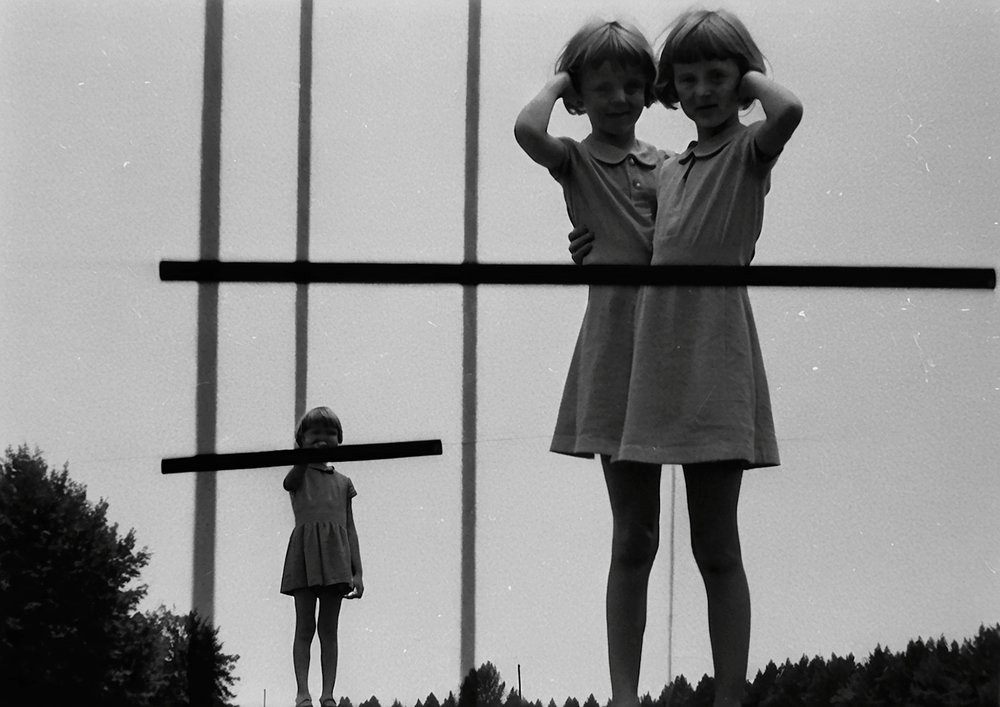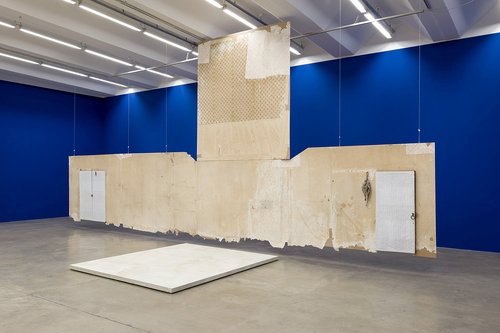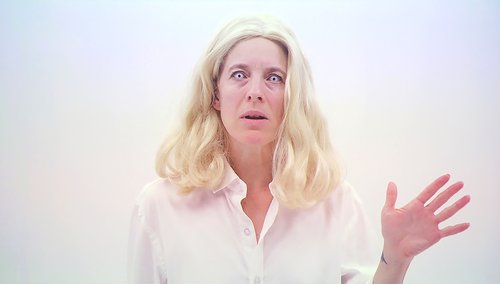Of Leaves and Operating Tables: Soft Power from the Baltics

Ivona Tau. Daughters, 2025. Courtesy of the artist and Galerie Met
There is a new crop of interesting art shows by Baltic artists this Spring in Europe. Latvian artist-sculptor Daiga Grantina has opened a solo show ‘Leaves’ at Emalin in London and works by Lithuanian new media artist Ivona Tau, recently featured in Christie’s infamous AI auction are on exhibition in Berlin. While at Zuzeum in Riga there is a historical trialogue show of three Baltic artists from the late Soviet period, ‘Unframed: Leis, Tabaka, Rožanskaite’.
Baltic contemporary art tickled the international art community for the first time in 2019 at the Venice Biennale when visitors, having heard rumours about the best show in town, walked up and down the canals asking ‘Where is Lithuania?’. ‘Sun and Sea (Marina)’ a gesamtkunstwerk of genius quickly became more famous than the three artists behind it yet most people remember it was by Lithuanian artists. If those of us not deeply familiar with Baltic art today can capture it in words we might say kooky and edgy, fresh and bold, cool and stylish. And female: a kind of soft power, art with a firm moral compass.
Yet combine that with both the darkness of the North, and late soviet and post-soviet consciousnesses shaped by the yoke of Soviet communist Imperialism, as well as familial traumas of appropriations, tragedies and exiles, and there is a much darker side too. Vija Celmins (b. 1938) once famously said that it was perhaps the ‘touch of melancholy’ in her art which made her a Latvian artist.
In Europe this Spring there are several engaging shows by artists from the Baltics, all of whom happen to be female. In London at Emalin, a gallery which has a good roster of young artists from post-soviet countries, millennial Latvian artist and sculptor Daiga Grantina (b.1985) has a solo show called ‘Leaves’. It is a recent body of work consisting of her hallmark organic, weird and alluring sculptural creations that have the presence of fetishes. Seeing many of her works displayed in one space, one is afforded the pleasure of appreciating dramatic changes in scale and physical texture. Her use of colour seems more bold than usual: there is more darkness present amongst the kind of fleshy decorative colours she often uses. When referring to these works Grantina applies the word ‘void’ encouraging us to think about their immateriality. The centrepiece, ‘Leaves’ from which the show takes its title, consists of five large stainless steel forms, nestled around a long, painted dark textile which hangs from the ceiling. Indeed, there is an interplay of space and material, the monumentality of the whole contrasts with a sense and quality of lightness which gathers and spins through the curves of the metal forms. Light comes in from the huge industrial windows of the gallery space facing on one side the busy Shoreditch High Street and here I think ‘Leaves’ suddenly becomes an ominous reminder to us urban souls living on the fringes of nature - where are we from, and what have we lost?
In Berlin at the Met Gallery there is a duo show of work by German art photographer Anna Fraire and Ivona Tau, ‘Somewhere, Something Shines’. Lithuanian born Tau has concurrently also dropped some of these works consisting of AI generated videos and photographs in a series called ‘Family Album, My Grandmother’s Memories’ on project.daily a website which acts as a leading gallery of NFT art. Rummaging through a box of old negatives which belonged to her mother, Tau digitalised some of the images she found and then using neural networks she has created a haunting series of black and white video works which evoke times gone by, childhood, and glimpses of the past. Tau describes these works as being “rooted in personal history” as well as “an exploration of cultural memory”, seeing the 70s and 80s in Lithuania as a time materially poor but in many ways a happier one. Tapping into her own roots as a Lithuanian artist who came of age after the Soviet era, Tau says: “I aim for my work to resonate universally…seen through the lens of personal experience and local history”.
For those interested in dipping further back into history, a visit to Zuzeum’s Spring exhibition, ‘Unframed: Leis, Tabaka, Rožanskaite’ in Riga is a rare introduction to three 20th century artists, all of them women, each from a different Baltic state. The flaws of this show are in part due to the ambitious task of curating a trialogue exhibition of three artists whose work is not well known to audiences, even locally. According to the introduction panel at the entrance there are two main strands behind the exhibition title ‘Unframed’. The curators mention images where a female protagonist is depicted as if stepping out of the picture, or turning her back to the viewer. And secondly how in their day each artist pushed the boundaries in their art, as they were all non-conformist artists working within the strict school of Soviet Realism, a standard throughout the whole Soviet Union, although individual countries had different levels of freedom of expression. Even as late as the mid 1980s with her suitcase packed, Estonian painter Malle Leis´s (1940–2017) trip to France was cancelled by a phone call the night before she was due to leave and on another occasion she did not receive all the money due to her for a commission by the Ministry of Culture because they were not happy with her interpretation of the subject. Exceptionally, Latvian artist Maija Tabaka (b.1939) spent a year in West Berlin on a DAAD scholarship in the late 1970s, the first Soviet artist to receive one and she wrote later about what she described as “a small hole through the iron curtain for memories, books and hopes…”
Although the curators strain to find elements in common between these three artists, and the notion of their creating images of women leaving the picture frame is exaggerated, a socio-political reading never dominates the show, leaving visitors free to wander through the exhibition spaces and mull over different themes as entry points into their work. In the end, the paintings of Lithuanian Marija Terese Rozanskaite (1933–2007) who as a young child was deported with her mother to Siberia in 1941 while her father was executed, carry the deepest scars of history, most evident in her works of patients in operating theatres and hospitals, gruesome and too real, a collective prayer for the human experience of state institutional repression at its worst.
Unframed: Leis, Tabaka, Rožanskaitė
Riga, Latvia
24 January – 18 May 2025
Somewhere, Something Shines
Berlin, Germany
15 March – 5 April 2025
Leaves
London, UK
7 March – 10 May 2025
























